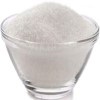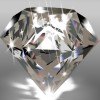Sodium Saccharin or Soluble Saccharin Manufacturer Exporter BP Ph Eur USP FCC Food Grade Manufacturer Exporter
Crystal Clear Products is a manufacturer exporter company manufacturing several chemicals including Sodium Saccharin or Soluble Saccharin and IP BP Ph Eur USP NF JP ACS AR Analytical Reagent FCC Food Grade, Pharmaceutical Chemicals at best prices. The group has offices and factories in India USA and UAE and toll manufacturers in China and sells to almost every country in the world.
The manufacturing facilities of our partner manufacturers have one or more of FDA-cGMP-GLP certification, ISO-9001 certification, Halal and/or Kosher certification, REACH pre-registration ISO-22000 HACCP. We also allow third party inspection of products offered. We can offer small quantities from laboratory and trial packs to large shipments of container loads of material.
Hazard Statements:
Not a hazardous substance or mixture according to Regulation (EC) No. 1272/2008.
This substance is not classified as dangerous according to Directive 67/548/EEC.
Not considered hazardous by the OSHA Hazard Communication Standard (29 CFR 1910.1200)
Signal Word: None
Transport Information
DOT USA, TDG Canada & ADR/RID Europe: Not dangerous goods.
IMO/IMDG: Not dangerous goods.
IATA/ICAO: Not dangerous goods.
You may please visit:
Sodium Saccharin or Soluble Saccharin SDS of Manufacturers

CAS Number 6155-57-3, 128-44-9, 82385-42-0 Sodium Saccharin or Soluble Saccharin, EINECS: 204-886-1, Molecular Weight: 205.17 anhydrous, Chemical Formula: C7H4NNaO3S-xH2O
Specifications of Saccharin Sodium USP Grade:
C7H4NNaO3S-2H2O --- 241.20
C7H4NNaO3S --- 205.17
1,2-Benzisothiazol-3(2H)-one, 1,1-dioxide, ;sodium salt, dihydrate;
1,2-Benzisothiazolin-3-one 1,1-dioxide sodium salt dihydrate CAS 6155-57-3.
Anhydrous CAS 128-44-9.
DEFINITION
Saccharin Sodium contains NLT 99.0% and NMT 101.0% of saccharin sodium (C7H4NNaO3S), calculated on the anhydrous basis.
IDENTIFICATION
A. Infrared Absorption.
B. Procedure:
Sample solution: 100 mg/mL
Potassium pyroantimonate solution: Dissolve 2 g of potassium pyroantimonate in 95 mL of hot water. Cool quickly and add 50 mL of a potassium hydroxide solution (50 mg/mL) and 1 mL of sodium hydroxide solution (8.5 in 100). Allow to stand for 24 h, filter, and dilute with water to 150 mL.
Analysis: To 10 mL of the Sample solution add 2 mL of 15% potassium carbonate, and heat to boiling. No precipitate is formed. Add 4 mL of Potassium pyroantimonate solution, and heat to boiling. Allow to cool in ice water and, if necessary, rub the inside of the test tube with a glass rod.
Acceptance criteria: A dense precipitate is formed.
C. Sodium salts impart an intense yellow color to a nonluminous flame.
Acceptance criteria: If any peaks due to o-toluenesulfonamide and p-toluenesulfonamide appear in the chromatogram of the Sample solution, the ratio of their areas to that of caffeine (internal standard) is NMT the corresponding ratio in the chromatogram of the Standard solution.
Individual impurities:
o-Toluenesulfonamide: 10 ppm.
p-Toluenesulfonamide: 10 ppm.
Limit of Benzoate and Salicylate:
Sample solution: 50 mg/mL
Analysis: To 10 mL of the Sample solution add 5 drops of 6 N acetic acid, and then add 3 drops of ferric chloride.
Acceptance criteria: No precipitate or violet color appears.
Water Determination: NMT 15.0%
Readily Carbonizable Substances: To pass the test.
Acidity or Alkalinity:
Sample solution: 100 mg/mL in carbon dioxide-free water
Analysis: To 10 mL of the Sample solution add 1 drop of PhPh.
Acceptance criteria: No red or pink color is produced. Then add 1 drop of 0.1 N sodium hydroxide: a red or pink color is produced.
Clarity of Solution: To pass the test.
Acceptance criteria: The Sample solution shows the same clarity as that of water, or its opalescence is NMT that of Reference suspension.
Color of Solution: To pass the test.
Acceptance criteria: The ;Sample solution has the appearance of water or is not more intensely colored than the Standard solution.
Saccharin Sodium BP Ph Eur Grade Specifications
Soluble Saccharin
Ph Eur
C7H4NNaO3S -- 205.2 CAS 128-44-9
Action and use: Sweetening agent.
DEFINITION
2-Sodio-1,2-benzisothiazol-3(2H)-one 1,1-dioxide.
Content: 99.0 per cent to 101.0 per cent (anhydrous substance). It may contain a variable quantity of water.
CHARACTERS
Appearance: White or almost white, crystalline powder or colourless crystals, efflorescent in dry air.
Solubility: Freely soluble in water, sparingly soluble in ethanol (96 per cent).
IDENTIFICATION
First identificationiB, E.
Second identificationiA, C, D, E.
A. Melting point: 226C to 230C.
To 5 ml of solution S (see Tests) add 3 ml of dilute hydrochloric acid. A white precipitate is formed. Filter and wash with water. Dry the precipitate at 100-105C.
B. Infrared absorption spectrophotometry.
C. Mix about 10 mg with about 10 mg of resorcinol, add 0.25 ml of sulphuric acid and carefully heat the mixture over a naked flame until a dark green colour is produced. Allow to cool, add 10 ml of water and dilute sodium hydroxide solution until an alkaline reaction is produced. An intense green fluorescence develops.
D. To 0.2 g add 1.5 ml of dilute sodium hydroxide solution, evaporate to dryness and heat the residue carefully until it melts, avoiding carbonisation. Allow to cool, dissolve the mass in about 5 ml of water, add dilute hydrochloric acid until a weak acid reaction is produced and filter, if necessary. To the filtrate add 0.2 ml of ferric chloride solution. A violet colour develops.
E. Solution S gives reaction (a) of sodium.
TESTS
Solution S: Dissolve 5.0 g in carbon dioxide-free water and dilute to 50.0 ml with the same solvent.
Appearance of solution: The solution is clear and colourless.
Dissolve 5.0 g in 25 ml of carbon dioxide-free water.
Acidity or alkalinity: To 10 ml of solution S add about 0.05 ml of a 10 g/l solution of PhPh in ethanol (96 per cent). The solution is not pink. Add 0.1 ml of sodium hydroxide 0.1 M. The solution becomes pink.
o- and p-Toluenesulphonamide: Gas chromatography to pass the test.
Readily carbonisable substances: Dissolve 0.20 g in 5 ml of sulphuric acid and keep at 48-50C for 10 min. When viewed against a white background, the solution is not more intensely coloured than a solution prepared by mixing 0.1 ml of red primary solution, 0.1 ml of blue primary solution and 0.4 ml of yellow primary solution with 4.4 ml of water.
Heavy metals: Maximum 20 ppm.
Water: Maximum 15.0 per cent, determined on 0.200 g.
Sodium Saccharin FCC Food Grade Specifications
1,2-Benzisothiazole-3(2H)-one 1,1-Dioxide Sodium Salt;
Sodium o-Benzosulfimide; Soluble Saccharin
C7H4NNaO3S-2H2O --- Formula weight 241.19
INS: 954 CAS 128-44-9
DESCRIPTION
Sodium Saccharin occurs as white crystals or as a white, crystalline powder. In powdered form, it effloresces to the extent that it usually contains only about one-third the amount of water indicated in its molecular formula. One gram is soluble in 1.5 mL of water and in about 50 mL of alcohol.
Function: Nonnutritive sweetener.
REQUIREMENTS
Identification:
A. Dissolve about 100 mg of sample in 5 mL of a 1:20 solution of sodium hydroxide, evaporate to dryness, and gently fuse the residue over a small flame until ammonia no longer evolves. After the residue has cooled, dissolve it in 20 mL of water, neutralize the solution with 2.7 N hydrochloric acid, and filter. Add 1 drop of ferric chloride to the filtrate. A violet color appears.
B. Mix 20 mg of sample with 40 mg of resorcinol, cautiously add 10 drops of sulfuric acid, and heat the mixture in a liquid bath at 200C for 3 min. After cooling, add 10 mL of water and an excess of 1 N sodium hydroxide. A fluorescent green liquid results.
C. The residue obtained by igniting a 2-g sample gives positive tests for Sodium.
D. Add 1 mL of hydrochloric acid to 10 mL of a 1:10 aqueous solution. A crystalline precipitate of saccharin forms. Wash the precipitate well with cold water, and dry at 105C for 2 h. The saccharin thus obtained melts between 226C and 230C.
Assay: Not less than 98.0% and not more than 101.0% of C7H4NNaO3S, calculated on the anhydrous basis.
Alkalinity: Passes test.
Benzoate and Salicylate: Passes test.
Lead: Not more than 2 mg/kg.
Readily Carbonizable: Substances Passes test.
Selenium: Not more than 0.003%.
Toluenesulfonamides: Not more than 0.0025%.
Water: Not more than 15.0%.
Contact for Monograph, Uses, Matnfacturing Process, etc of Sodium Saccharin or Soluble Saccharin and JP IP BP Ph Eur USP NF FCC Food AR ACS Reagent Grade Manufacturer Supplier Exporter
MANUFACTURER EXPORTER
MUMBAI 400009, INDIA. TEL: (OFFICE) 91-9322665100
info@manufacturerexporter.com
Copyright and Usual Disclaimer is Applicable
Last updated
11/19/2022
Manufacturer Suppliers Exporters at Wholesale Prices from India USA and around the Globe
Sodium Acetate Trihydrate Anhydrous -- Sodium Acetate IP BP USP ACS AR Analytical Reagent FCC Food Grade -- Sodium Adipate -- Sodium Alginate -- Sodium Ascorbate -- Sodium Benzoate -- Sodium Bromide -- Sodium Butyrate -- Sodium Butyl hydroxybenzoate or Sodium Butylparaben -- Monosodium Citrate or Sodium Dihydrogen Citrate -- Disodium Hydrogen Citrate -- Sodium Citrate -- Sodium Ethyl Hydroxybenzoate or Sodium Ethylparaben -- Sodium Formate -- Sodium Hyaluronate -- Sodium Lactate -- Sodium lactobionate -- Sodium Malate -- Sodium Methyl Hydroxybenzoate or Sodium Methylparaben -- Sodium Oleate -- Sodium Persulfate -- Sodium Propyl Hydroxybenzoate or Sodium Propylparaben -- Sodium Selenite -- Sodium Selenate -- Sodium Stearate -- Sodium Succinate -- L-Selenomethionine -- Sodium Tartrate -- Sodium Thiosulfate Thiosulphate Pentahydrate Anhydrous -- Sodium Thiosulphate Thiosulfate IP BP USP ACS AR Analytical Reagent FCC Food Grade -- Sodium Diacetate -- Sodium Erythorbate -- Sodium Propionate -- Sodium Hydroxymethanesulfonate Formaldehyde Bisulfite --
Aspartame Acesulfame -- Acesulfame Potassium -- Aspartame -- Dextrose -- Lactose -- Maltodextrin -- Insoluble Saccharin -- Sodium Saccharin -- Calcium Saccharin -- Sucrose -- Sucralose --






